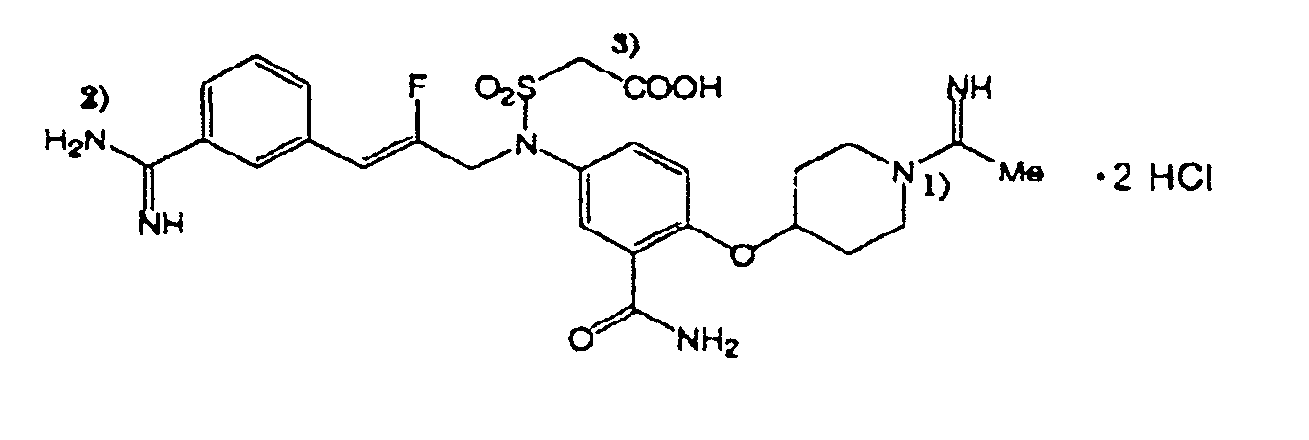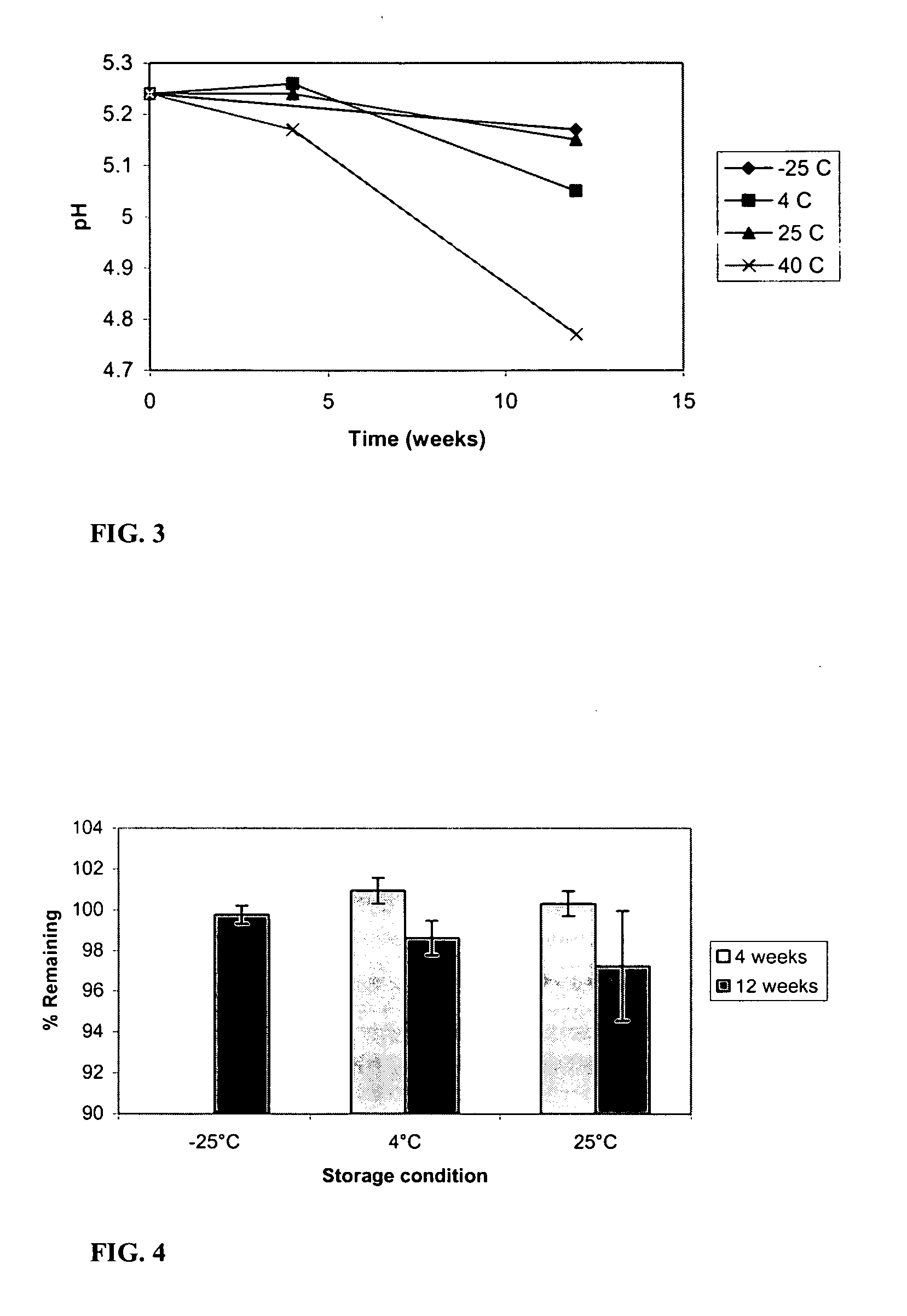Peptidically buffered formulations for electrotransport applications and methods of making
a technology of electrotransport and formulations, applied in the field of peptides, can solve the problems of very susceptible to base catalysis of drugs, and achieve the effects of adequate ionization, drug flow, and improved drug storag
- Summary
- Abstract
- Description
- Claims
- Application Information
AI Technical Summary
Benefits of technology
Problems solved by technology
Method used
Image
Examples
example 1
Preparation of Cationic Drug Formulations for Electrotransport
[0092] The pH of a concentrated solution of a 2-[3-[4-(4-piperidinyloxy)anilino]-1propenyl]benzamidine derivative depicted in FIG. 1, and referred to as ROH-4746, was adjusted by adding either NaOH or small quantities of a hydroxylated anion exchange resin (AG1-X8, available from Biorad, 2000 Alfred Nobel Dr., Hercules, Calif. 94547) to the drug solution. The natural pH of the benzamidine derivative in water is lower than the lowest pKa of the drug. Exchange of the chloride counterion of the drug molecule with hydroxide from the resin raised the pH of the drug solution without introducing any competing ion that could reduce drug flux during electrotransport. After the pH of the drug solution was adjusted to the desired value, at or near the pI of the multipeptide of interest (e.g., His-Glu with pI=5.2), the resin was removed by filtration through a syringe filter (0.2 μm). The multipeptide buffer, e.g., His-Glu, was then...
example 2
In Vitro Electrotransport Studies
[0094] Prepared hydrogels (as described above) were allowed to imbibe the buffered ROH-4746 solution 12-24 hours before experimentation allowing the drug to equilibrate throughout the gel. With the use of an intial ROH-4746 concentration of 100 mg / mL before ion exchanging, the resultant ROH-4746 concentration in the hydrogels after imbibing were about 30 mg / mL on aqueous basis. Electrotransport flux tests were performed as described above using modified Franz diffusion cells that had a silver foil anode and a silver chloride cathode. The modified Franz diffusion cells accommodated formulations with poly(vinyl alcohol) polymer (PVOH) provided a constant source of fresh receptor solution. The surface area of testing across which drug was passed was about 1.3 cm2. The hydrogel thickness used in the test was about 1.6 mm. The overall housing was constructed of Delran Teflon. The anodic compartment contained the drug-containing PVOH hydrogel. The cathode...
example 3
Long Term Storage Using Dipeptide Buffers
[0097] An accelerated formulation stability study was conducted to assess the buffering capabilities of dipeptides during storage. Hydrogels were prepared containing 2.37% ROH-4746 in the storage composition using the method describe above, and buffered with His-Glu (pI=5.2, 25 mM) having an initial pH of 5.24. Furthermore, the stability of a ROH-4746 under storage in a multipeptide buffer was also assessed. FIG. 3 is a graph that shows the shift in pH over a 12-week period in varied storage conditions. A maximum pH shift was seen to be a decrease of about 0.7 unit in hydrogels stored at 40° C. However, in storage conditions of 25° C. and below, pH shift was limited to about 0.4 pH units or less. In all cases, the multipeptide was shown to be sufficient in maintaining pH during storage. This study showed the utility of multipeptide buffers within the formulation. FIG. 4 summarizes the recovery of the drug in the His-Glu buffered hydrogels of...
PUM
 Login to View More
Login to View More Abstract
Description
Claims
Application Information
 Login to View More
Login to View More - R&D
- Intellectual Property
- Life Sciences
- Materials
- Tech Scout
- Unparalleled Data Quality
- Higher Quality Content
- 60% Fewer Hallucinations
Browse by: Latest US Patents, China's latest patents, Technical Efficacy Thesaurus, Application Domain, Technology Topic, Popular Technical Reports.
© 2025 PatSnap. All rights reserved.Legal|Privacy policy|Modern Slavery Act Transparency Statement|Sitemap|About US| Contact US: help@patsnap.com



